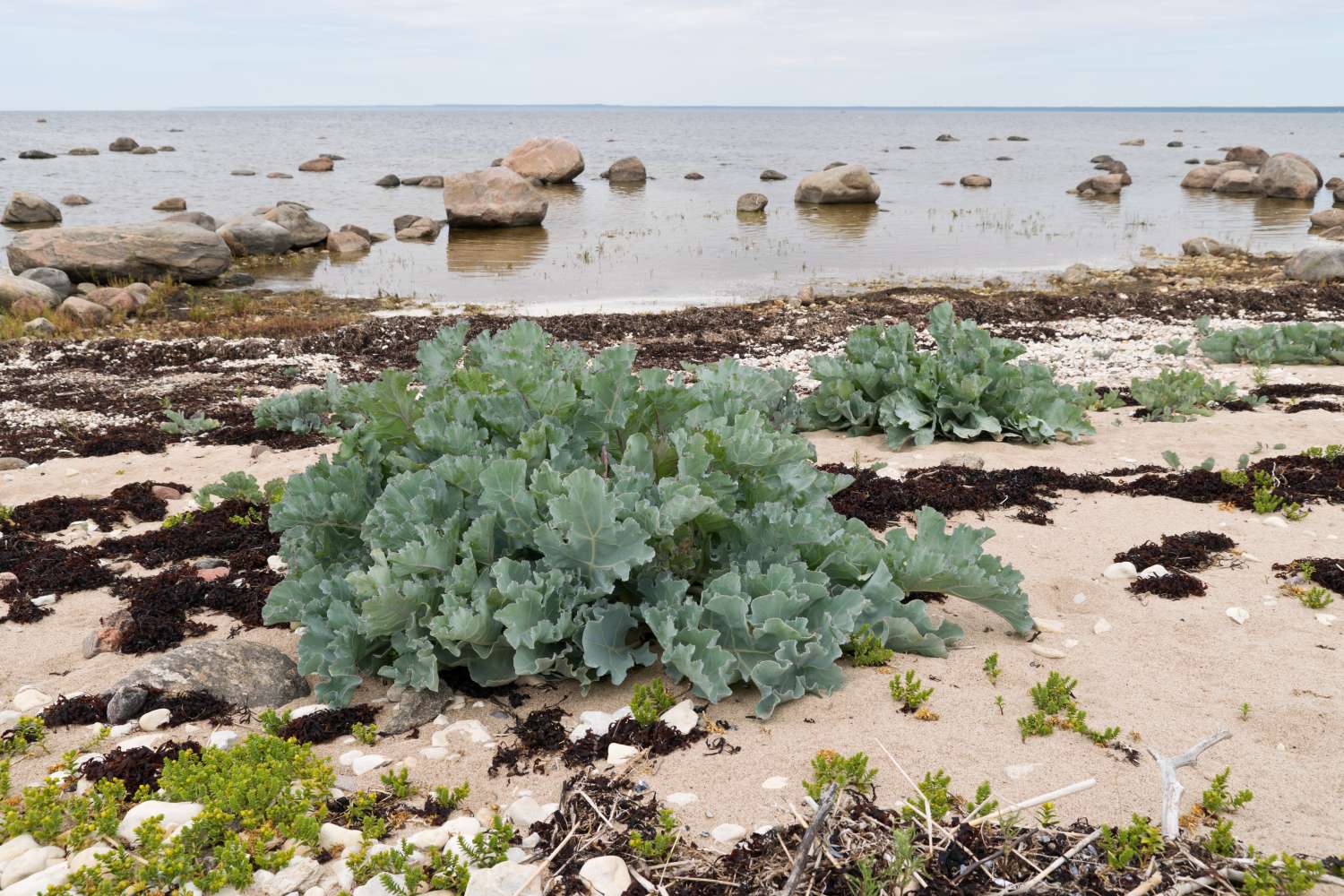
Sea kale, also known as Crambe maritima, is a fascinating coastal plant that has intrigued botanists and food enthusiasts alike. Ever wondered what makes this hardy plant so special? Sea kale thrives in harsh seaside environments, making it a resilient addition to any garden. Not only is it packed with nutrients, but it also boasts a unique taste that can elevate any dish. From its historical significance to its culinary uses, there's a lot to learn about this versatile plant. Ready to dive into some intriguing facts about sea kale? Let's uncover the secrets of this coastal gem and see why it deserves a spot in your garden and kitchen.
Key Takeaways:
- Sea kale is a versatile coastal plant with edible leaves, stems, flowers, and roots. It's packed with nutrients, supports digestive and bone health, and has a positive impact on the environment.
- With its salty, nutty flavor, sea kale can be blanched like asparagus, cooked like spinach, and pickled for a tangy crunch. It's hardy, low-maintenance, and supports soil stabilization and biodiversity.
What is Sea Kale?
Sea kale, also known as Crambe maritima, is a perennial plant found along the coasts of Europe. It has been a part of coastal diets for centuries due to its unique taste and nutritional benefits. Let's dive into some fascinating facts about this coastal gem.
-
Edible Parts: Almost every part of sea kale is edible. The leaves, stems, flowers, and roots can all be consumed, making it a versatile addition to meals.
-
Nutrient-Rich: Sea kale is packed with vitamins and minerals. It contains high levels of vitamin C, vitamin K, and manganese, which are essential for maintaining good health.
-
Historical Significance: This plant has been eaten since ancient times. The Greeks and Romans valued it for its medicinal properties and nutritional benefits.
Growing Conditions
Sea kale thrives in specific environments. Understanding its growing conditions can help in cultivating this plant successfully.
-
Coastal Habitat: Sea kale naturally grows in sandy and rocky coastal areas. It is well-adapted to salty conditions, which makes it unique among edible plants.
-
Cold Hardy: This plant is incredibly hardy and can survive harsh winter conditions. It can tolerate temperatures as low as -20°C (-4°F).
-
Perennial Nature: Sea kale is a perennial, meaning it can live for several years. Once established, it can provide a continuous harvest for many seasons.
Culinary Uses
Sea kale is not only nutritious but also versatile in the kitchen. Here are some ways it can be used in cooking.
-
Blanched Stems: The young stems of sea kale can be blanched and eaten like asparagus. They have a mild, nutty flavor that pairs well with various dishes.
-
Leafy Greens: The leaves can be cooked like spinach or kale. They are tender and have a slightly salty taste, making them a great addition to salads and sautés.
-
Pickled Buds: The flower buds can be pickled and used as a condiment. They add a tangy crunch to sandwiches and salads.
Health Benefits
Consuming sea kale can offer numerous health benefits due to its rich nutrient profile.
-
Antioxidant Properties: Sea kale is rich in antioxidants, which help protect the body from oxidative stress and reduce the risk of chronic diseases.
-
Digestive Health: The fiber content in sea kale aids in digestion and helps maintain a healthy gut. It can prevent constipation and promote regular bowel movements.
-
Bone Health: The high levels of vitamin K and manganese in sea kale support bone health. They play a crucial role in bone formation and maintenance.
Environmental Impact
Sea kale also has a positive impact on the environment, making it an eco-friendly choice for gardeners and farmers.
-
Soil Stabilization: The deep root system of sea kale helps stabilize sandy soils, preventing erosion and promoting soil health.
-
Biodiversity Support: By planting sea kale, gardeners can support local biodiversity. It provides habitat and food for various insects and wildlife.
-
Low Maintenance: Sea kale requires minimal care once established. It is drought-tolerant and resistant to many pests and diseases, making it an easy plant to grow sustainably.
Sea Kale: A Hidden Gem
Sea kale, often overlooked, packs a punch in both nutrition and versatility. This coastal plant, rich in vitamins A, C, and K, offers numerous health benefits. Its unique taste, a mix of broccoli and asparagus, makes it a delightful addition to any meal. Plus, it's easy to grow in your garden, thriving in sandy soils and requiring minimal care.
Not just for foodies, sea kale also supports coastal ecosystems by preventing soil erosion. Its hardy nature means it can withstand harsh conditions, making it a resilient choice for sustainable gardening.
Incorporating sea kale into your diet or garden can be a rewarding experience. Whether you're a health enthusiast, a gardener, or someone looking to try something new, sea kale has something to offer. Give this underrated plant a chance, and you might just find a new favorite.
Frequently Asked Questions
Was this page helpful?
Our commitment to delivering trustworthy and engaging content is at the heart of what we do. Each fact on our site is contributed by real users like you, bringing a wealth of diverse insights and information. To ensure the highest standards of accuracy and reliability, our dedicated editors meticulously review each submission. This process guarantees that the facts we share are not only fascinating but also credible. Trust in our commitment to quality and authenticity as you explore and learn with us.


